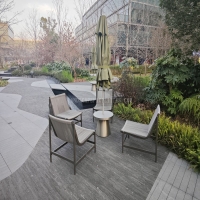Welcome to the website for landscape facilities products and knowledge.
What are the options for adding built-in outdoor historical walking tour aids?
Historical walking tours offer immersive ways to explore the past, and integrating built-in outdoor aids can significantly enrich the visitor experience. These aids provide accessible, engaging, and educational support without requiring personal devices. One popular option is permanent audio tour systems. These consist of weather-resistant speakers or listening posts strategically placed at key points. Visitors can press a button to hear narrations about the site's history, often available in multiple languages. This hands-free approach allows people to absorb information while observing their surroundings.
Another effective method is the use of interactive historical plaques or panels. Unlike traditional static signs, these can incorporate QR codes that link to online resources, such as videos, detailed articles, or archival photographs. Some advanced panels even feature small solar-powered screens that play short clips when activated. This transforms a simple marker into a dynamic storytelling tool.
For wayfinding and context, built-in digital kiosks or maps are invaluable. These touchscreen displays can be installed at the tour's starting point or at major junctions. They provide an overview of the route, highlight points of interest, and offer deeper dives into specific historical events or figures. Their robust design ensures they withstand outdoor conditions.
Tactile aids, such as bronze relief maps or models of historical structures, are excellent for accessibility and engagement. They allow visually impaired visitors to feel the layout of a battlefield or the architecture of a demolished building, creating a multi-sensory learning experience.
Finally, incorporating augmented reality (AR) markers into the landscape is an emerging trend. By scanning a discreet code on a plaque or monument with a smartphone, visitors can see historical overlays—like a reconstructed fort or a reenactment of an event—superimposed on the real world. This blend of physical and digital elements makes history come alive.
Implementing these built-in options requires consideration of durability, maintenance, and inclusivity. However, they effectively create a self-guided, informative, and captivating historical journey for all audiences, fostering a deeper connection to our shared heritage.
Related search:

Recommendation
Metal structure rattan chair without armrests for single person, with woven seat and backrest.